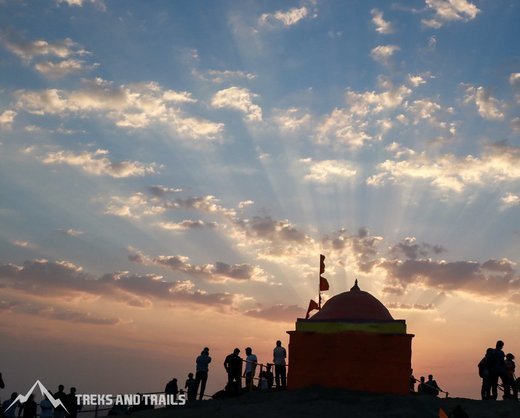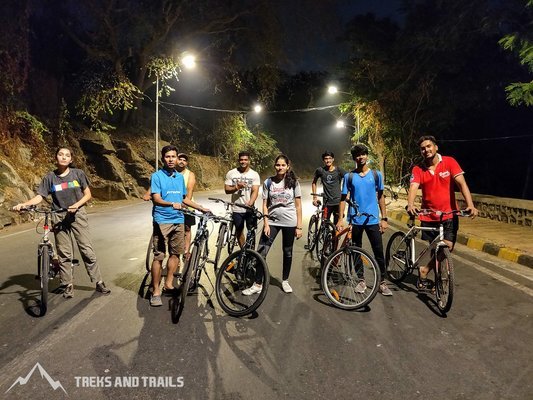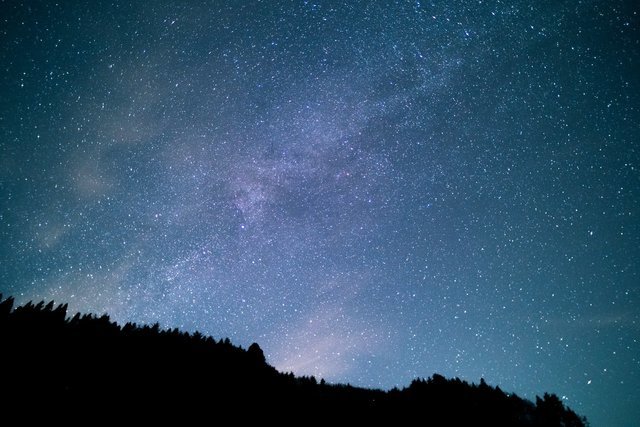Spiti Valley unknown destination on the tourist map, Cold desert with rugged mountains and snow-capped peaks welcomes you. Valley is a difficult place to live.
On your road trip, you can experience Ancient Monastery, Rugged Mountains, Quaint villages, Stay in homestays with locals, explore enchanting valleys, sample local food, take awesome selfies and landscape images, camp under the night sky, visit beautiful hidden lakes, slow down see colorful sunrise and beautiful sunsets. Witness Milkyway and Starry nights on new moon nights. Enjoy the fantastic hospitality of Spiti valley.
Day 1 : Chandigarh to Manali
Arrive in the morning at 8 am at Chandigarh Station and head towards Manali. Check-in at your hotel by 8 pm & freshenup. Have your dinner at 9 pm. Overnight stay at Manali.
Day 2 : Manali to Kaza
After having breakfast, check-out & head towards Kaza. We will start our journey by 9 am from Manali, clustered together in our transports, and head off right to the beautiful town of Kaza (3,800 m), a 6-7 hour journey via Atal Tunnel and Kunzum Pass will take us to Kaza. We also use this day to get familiar with the high altitude of Spiti by drinking lots of water and taking small strolls around. Dinner & overnight stay at Kaza.
Day 3 : Kaza - Pin Valley - Dhankar Monastery - Kaza
After having breakfast, 9 am head towards Dhankar Monastery & Pin Valley National Park. Reach Kaza by 4 pm & you're free to explore the local Kaza market and Cafe. Dinner & overnight stay at Kaza.
Day 4 : Kaza - Hikkim - Komic - Langza - Key Monastery - Kaza
After having breakfast, 9 am we will visit a few of the highest populated regions of the world. We will make our first stop at Langza, situated at an altitude of 4,400 meters. Once we arrive at Langza we are free to stroll around and visit the ancient Lang which is a temple aged at least a thousand years and see the marine fossils discovered here in the sedimentary rocks. After spending some time in the beauty of Langza, we head to Hikkim, where the highest post office in the world is located. Then we shall visit Komic, which actually translates to ‘eye of a snow cock’. Komic is the highest motorable village in the whole world at a stunning height of 4,587 meters! Later we will visit Key, famous for its magnificent Key Monastery situated at the foot of almost perpendicular ridges, it is also the largest Gelugpa Sect Monastery in Spiti. This monastery is also has a training center for the Lamas. Spending a little time in the peace and tranquility of this monastery can certainly be a soulful experience, something to cherish for a lifetime. We revert back to Kaza and you are loose to explore the bazaar at Kaza and purchase souvenirs for your family and friends. Back to hotel in evening & freshen up. Dinner & overnight stay at Kaza.
Day 5 : Kaza - Chicham Bridge - Chandratal Lake - Manali
Leave early in the morning by 8 am and head towards Chicham Bridge. (Packed breakfast would be given today) We arrive by 9 am & tour the famous Chicham Bridge, the highest bridge in Asia, and also listen to the stories about the ancient method of utilizing pulley trolleys. We then drive through the least populated hamlet of Spiti- Losar, to arrive at India’s highest motorable mountain pass that connects Kullu and Lahaul to Spiti valley- Kunzum La at a height of 15,000 feet. From Kunzum La, we travel to one of the most photogenic spots in Spiti Valley- the mesmerizing Chandratal Lake, popularly known as the lake of the moon. This radiant lake has no visible source of water, assuming that the water for this lake appears from underground. 3 pm we head towards Manali. We will check-in at our hotel in Manali by 8 pm & freshen up. Dinner & overnight stay at Manali.
Day 6 : Manali
Wake up by 9 am & have your breakfast. Later head towards full day excursion to Manali. Evening free to stroll on Mall Road. Back to hotel by 9 pm. Dinner & overnight stay at Manali.
Day 7 : Manali to Chandigarh
Leave early in the morning & head towards Chandigarh Station / Airport with a bunch of sweet memories collected on the Spiti Valley Trip.
Spiti Valley Road Trip Details
- Duration: 6 Nights and 7 days
- Chandigarh to Chandigarh
- Cost: Rs. 20,000 /- per person (excluding 5% GST)
- Block your spot now by Paying Rs 3000.
- Balance to be paid 20 days before trip start date.
What is included in the tour
What is included in the tour
- All hotel, guesthouse and camping charges on triple sharing basis.
- All Hotels and camps with breakfast & dinner (MAPAI Plan: - Room + Breakfast + Dinner).
- Welcome drink on arrival.
- Tempo Traveller for all transfers and sightseeing for all members.
- Driver allowance and toll taxes
What is NOT included in the tour
What is NOT included in the tour
- Snacks, beverages and Lunch(all days)
- Bus/Train/Air fare till Chandigarh and back
- Any kind of insurance
- Service tax exclusive (GST)
- Personal expenses like camera charges, etc.
- Any kind of cost which is not mentioned in the cost includes above
- All expenses incurred due to unforeseen and unavoidable circumstances like roadblocks, bad weather
- Cost of any medical emergency or other emergency if required
Things to Carry
- 2/3-liter water bottle
- Masks and sanitizer
- Sunscreen
- Goggles
- Hiking/ trekking shoes
- Lip balm
- Thermals
- Woolen socks, Woolen cap, Muffler
- Wind cheater
- Sweat shirt, Jacket
- Woolen gloves
- Toilet paper
- Moisturizer
- Extra camera batteries / Portable Charger
- Personal first aid kit and personal medicines
- Identity proof
- Cap
- Face Wash
- Body Soap
- Vaccine Certificate of 2 Doses Completed / RT-PCR Certificate in case of 1 Dose completed
Cancellation Policy
In case you need to cancel your plans for the trip due to avoidable/unavoidable reasons, please do notify us via email.
The cancellation charges will be as follows:
- 60 to 46 days prior to date of departure: 20% of the tour cost
- 45 to 16 days prior to date of departure: 30% of the tour cost
- 15 to 8 days prior to date of departure: 50% of the tour cost
- Less than 7 days prior to date of departure: No refund
- No show No Refund
- Event Tickets cannot be transferred to another date against cancellation
- Event Tickets cannot be transferred to another person against cancellation
Weather in Manali and Spiti Valley during winters?
Winters in Manali and Spiti Valley are extremely cold. November to February is winter in Manali & Spiti Valley. Snowfall is heavy and the temperature can dip below -10 degrees Celsius.
Skiing and snowboarding are popular winter activities in Manali. Unfortunately, winter snowfall may restrict routes on the roads to Manali.
Due to excessive snowfall, majority of Spiti Valley is isolated during winter. Most hotels and guesthouses close when temperatures dip to -30 degrees Celsius. For intense winter adventure, visit Spiti Valley. Winter travel to Manali and Spiti Valley requires proper winter clothing and gear.
What is the best time to visit Manali and Spiti Valley?
The months of May and June, which fall within the summer season and feature beautiful weather and easily navigable roads, are by far the most popular time for tourists to pay a visit. September and October, when the monsoon season finishes and fall begins, bring bright skies and pleasant temperatures.
If you want to ski or snowboard in a winter wonderland, travel between November and February. Before arranging your trip, check the status of various high-altitude passes and highways going to Spiti Valley, which are closed in winter.
How do I get to Spiti Valley from Manali?
From Manali to Spiti, there are two buses daily. The Rohtang Pass, the Kunzum Pass, and finally Kaza are the waypoints. To take a HRTC bus, you'll need to buy a ticket at least two days in advance, for around Rs. 250, then head to the central Manali Bus Station to get on the road.
How far is Spiti from Manali?
Depending on which route you take, the journey from Manali to Spiti Valley can vary considerably. There are two main routes from Manali to Spiti Valley:
Manali to Kaza through Rohtang Pass: This is the most common route, with a distance of roughly 200 kilometres between Manali and Kaza via Rohtang Pass.
Manali to Kaza via Kunzum Pass: This route is longer, but it offers spectacular Himalayan views. The trip from Manali to Kaza via Kunzum Pass is around 450 kilometres.
Kaza is the administrative headquarters of Spiti Valley, and the most of the tourist attractions in Spiti Valley are within a 50-60-kilometer radius of Kaza. Manali to Spiti Valley is around the same distance as Manali to Kaza, or about 200 kilometres through Rohtang Pass.
How can I reach Manali
By Air
The Bhuntar airport is 10 km from Manali and is the main entrance to this area. Tourists who want to fly and can afford it can get to Manali much faster and have a lot more time to spend there. There are flights from all the big cities.
Nearest Airport: Bhuntur Airport, Kulu
By Train
The closest train station to Manali is Jogindernagar, which connects the hill station to several important cities in India. By train, you can also get to Manali from Chandigarh and Ambala. From the train stations, you can take a taxi, a bus, or a combination of the two for a fair price.
By Road
The Himachal Pradesh state bus service is great, and for a reasonable price, you can take a bus from the state to different parts of the country. The best way to get to Manali at the best price is by road. Manali is connected by roads to places like Delhi (540 km), Chandigarh (305 km), Dehradun (227 km), and Ambala (270 km) (370km). There are also a number of private buses that run between the hill station and other parts of the state.
What are the best things to do in Manali and Spiti Valley?
Tourists can do a wide range of things in Manali and Spiti Valley. Here are some of best things to do:
Trekking: There are many different kinds of trekking in Manali and Spiti Valley, from easy to hard. The Hampta Pass Trek, the Beas Kund Trek, and the Pin Parvati Trek are all well-known treks.
Adventure Sports: Some of the adventure sports you can do in Manali are paragliding, river rafting, and skiing.
Sightseeing: Rohtang Pass, Solang Valley, and Key Monastery are all beautiful places to visit in Manali and Spiti Valley. You can go to these places and enjoy the lovely scenery.
Visit Hot Springs: There are natural hot springs near Manali and Spiti Valley that you can swim in. Tourists like to go to Manikaran and Vashisht to soak in the hot springs there.
Explore the local markets. Both Manali and Spiti Valley have lively markets where you can buy souvenirs, handicrafts, and tasty local foods.
Festivals: You can go to events like the Hadimba Devi Fair, the Winter Carnival, and the Losar Festival.
Is Spiti Valley safe?
Spiti Valley is generally considered a safe destination for travelers. The local people are friendly and welcoming, and the region has a low crime rate. However, it is always recommended to take necessary precautions to ensure your safety while traveling.
One of the main safety concerns in Spiti Valley is the terrain and altitude. The region is located at an average altitude of 4,000 meters above sea level, and the lack of oxygen can cause altitude sickness, which can be life-threatening in severe cases. It is advisable to acclimatize properly before engaging in any physical activity or undertaking treks.
Why doesn't Spiti Valley have any trees?
Since the area is in a rain shadow, it doesn't rain much, so the mountains don't have any plants. The climate has sharp changes in temperature, high-speed winds, an atmosphere at a high altitude, and low humidity. All of these things make the soil dry and almost completely devoid of organic matter.
Does Spiti Valley have an oxygen problem?
Spiti Valley is at a high altitude. At this altitude, the air is thin, which can make it hard for some people to breathe because there isn't enough oxygen. Most people, though, can get used to the altitude over time, and altitude sickness can be avoided by getting used to the altitude slowly and drinking lots of water to stay hydrated.
It's important to remember that some people may be more likely to get altitude sickness, like those who have problems with their lungs or hearts. Before going to Spiti Valley or any other high altitude place, people in these situations should talk to a doctor.







